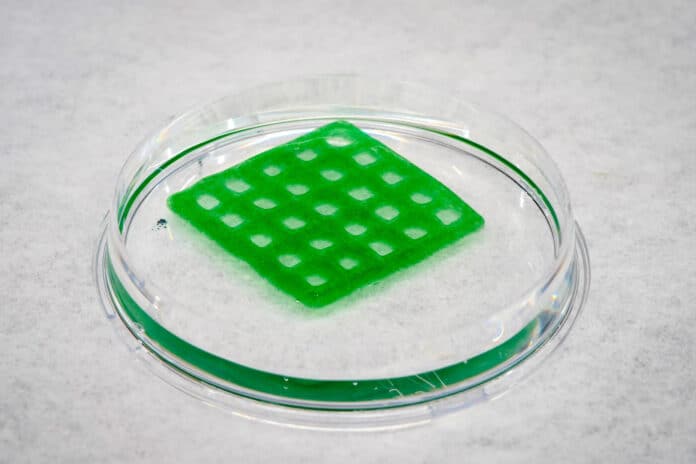Water pollution is a serious issue that needs to be addressed to ensure the safety of our environment. One of the major challenges is removing pollutants from water, which is a difficult and time-consuming process.
In recent years, there have been several advancements in water pollution remediation. These include the use of filtration, nanomaterials, and chemical treatment, among others.
Now, researchers at the University of California San Diego have developed a new type of 3D-printed material that could offer a sustainable and eco-friendly solution to clean pollutants from water.
Dubbed an “engineered living material,” it is made of a seaweed-based polymer known as alginate combined with a type of water-dwelling, photosynthetic bacteria known as cyanobacteria. The resulting hydrogel was then fed into a 3D printer to fabricate a cyanobacterial biocomposite material capable of producing multiple functional outputs.
After testing various 3D-printed geometries for their material, researchers found that a grid-like structure was optimal for keeping the bacteria alive. The chosen shape has a high surface-area-to-volume ratio, which places most of the cyanobacteria near the material’s surface, where they can more easily access life-sustaining nutrients, gases, and sunlight. The increased surface area also makes the material more effective at decontamination.
Importantly, the cyanobacteria in the material have been genetically engineered to continually produce a decontaminating enzyme called laccase. Previous studies have shown how laccase can be used to neutralize a variety of organic pollutants, including bisphenol A (BPA), antibiotics, pharmaceutical drugs, and dyes.
In lab tests, researchers demonstrated that the new material can be used to decontaminate the dye-based pollutant indigo carmine, a toxic dye commonly used in denim blue jeans production. The material was tested, and it was observed that it decolorized a water solution containing the dye.
In addition to offering new solutions to tackle water pollution, the researchers have also developed a strategy to eliminate the genetically engineered cyanobacteria once their job is done. They achieved this by engineering the bacteria to produce a protein that destroys their own cells when they’re exposed to a natural chemical known as theophylline.
“The living material can act on the pollutant of interest, then a small molecule can be added afterward to kill the bacteria,” said Jon Pokorski, a professor of nanoengineering at UC San Diego who co-led the research, in an official release. “This way, we can alleviate any concerns about having genetically modified bacteria lingering in the environment.”
For this, researchers are now looking for a preferable solution to have the bacteria destroy themselves without the addition of chemicals.
“We’re excited about the possibilities that this work can lead to, the exciting new materials we can create,” said Pokorski. “This is the kind of research that can result when researchers with cross-disciplinary expertise in materials and biological sciences join forces.”
Journal reference:
- Debika Datta, Elliot L. Weiss, Daniel Wangpraseurt, Erica Hild, Shaochen Chen, James W. Golden, Susan S. Golden, and Jonathan K. Pokorski. Phenotypically complex living materials containing engineered cyanobacteria. Nature Communications, 2023; DOI: 10.1038/s41467-023-40265-2
